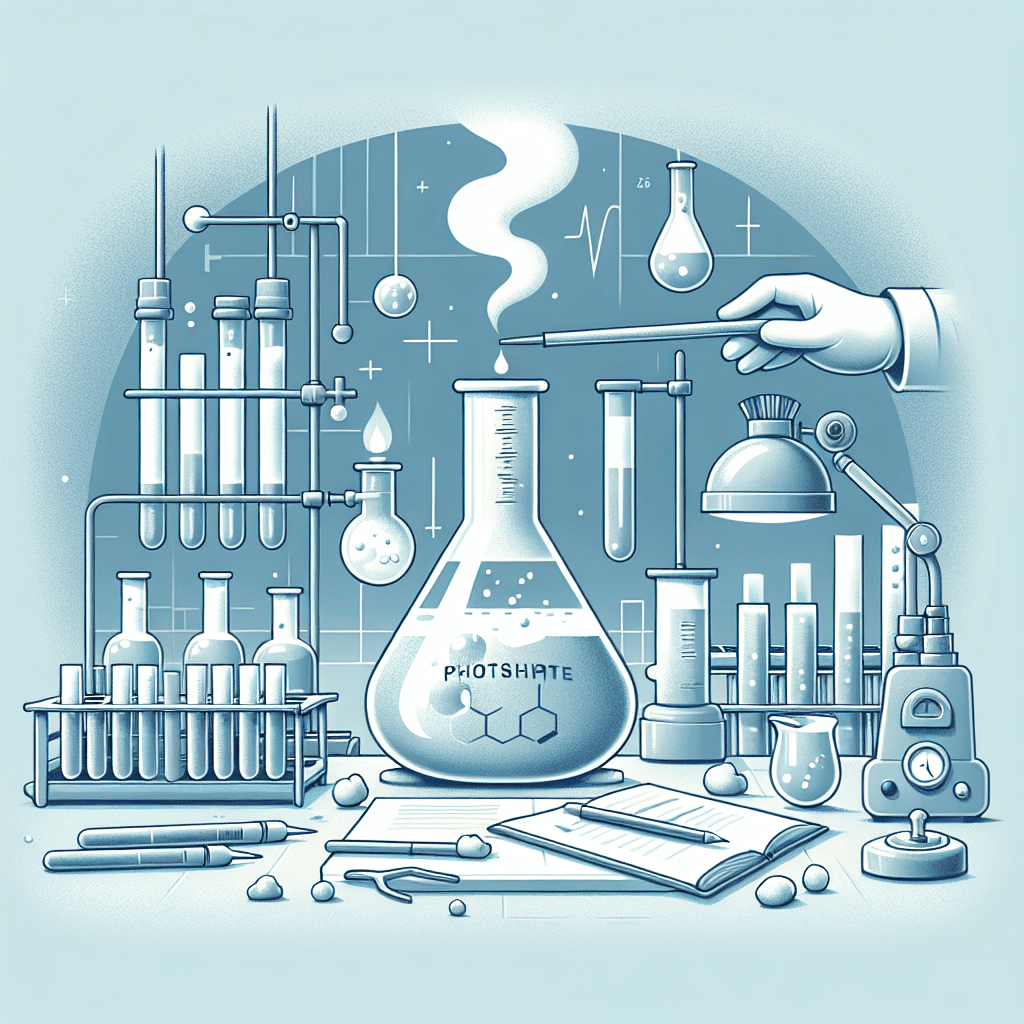Understanding Phosphorus in Water
As I dive into the world of my saltwater aquarium, understanding phosphorus is crucial. Phosphorus plays a significant role in aquatic systems, and its levels can greatly impact the health of my reef tank.
Sources of Phosphorus
Phosphorus enters our waterways from a variety of sources. Here are some common contributors:
| Source | Description |
|---|---|
| Human and Animal Waste | Waste breakdown adds phosphorus to water systems. |
| Phosphorus-Rich Bedrock | Natural geological sources that leach into water. |
| Laundry and Cleaning Waste | Detergents can contain phosphates that wash into waterways. |
| Industrial Effluents | Wastewater from factories often has high phosphorus levels. |
| Fertilizer Runoff | Excessive fertilizer application leads to runoff during rains. |
These sources can lead to over-fertilization of aquatic plants and accelerated eutrophication, which is a process that can create serious problems for my aquarium environment. For more on this, I recommend checking out saltwater aquarium setup.
Impact of Excessive Phosphorus
When phosphate levels in the water rise too high, the results can be detrimental. Excessive phosphate levels lead to rapid growth of algae and aquatic weeds.
Here’s what can happen:
- Algal Blooms: These can form quickly, leading to bright green water that blocks sunlight from reaching other aquatic plants.
- Oxygen Depletion: When algae die and decompose, they consume dissolved oxygen in the water. This can result in hypoxia, which is a condition where there isn’t enough oxygen for fish and other aquatic organisms to survive.
- Fish Death: The depletion of oxygen can lead to the death of fish and other aquatic life, ultimately disrupting the balance of my aquarium.
Human activities have significantly accelerated the rate of eutrophication through point-source discharges and non-point loadings of nutrients, presenting a challenge for hobbyists like me. The estimated cost of damage caused by eutrophication in the U.S. alone is around $2.2 billion annually. This highlights the importance of managing phosphorus levels effectively in my aquarium.
By staying informed about the sources and impacts of phosphorus in my saltwater aquarium, I can take proactive steps to remove phosphate and maintain a healthy aquatic environment.
Forms of Phosphorus
Understanding the different forms of phosphorus is crucial for managing phosphate levels in my saltwater aquarium. Each type of phosphate has unique properties, and recognizing these can help me effectively remove phosphate when needed.
Orthophosphate, Metaphosphate, and Organic Phosphate
Phosphates exist in three primary forms: orthophosphate, metaphosphate (also known as polyphosphate), and organically-bound phosphate. Each form has distinct chemical characteristics and sources, which influence how they behave in my aquarium.
| Phosphate Form | Chemical Formula | Common Sources |
|---|---|---|
| Orthophosphate | PO₄³⁻ | Found in sewage and fertilizers |
| Metaphosphate | (PO₃)ₓ | Used in detergents |
| Organic Phosphate | Varies (often C-O-P) | Result of breakdown of organic matter and pesticides |
Orthophosphate: This form is the most common and is often found in sewage and fertilizers. It can easily be absorbed by aquatic plants and algae, leading to unwanted algal blooms if not carefully managed. I always keep an eye on my orthophosphate levels to maintain a healthy balance in the tank.
Metaphosphate: This type is often used in detergents and can contribute to elevated phosphate levels if introduced into the aquarium through water changes or cleaning products. It’s important to choose phosphate-free products for my aquarium maintenance to avoid adding unnecessary phosphates.
Organic Phosphate: This form results from the breakdown of organic materials, including leftover food, waste from fish, and decaying plants. It can also come from pesticides used in gardening. Managing organic phosphate levels involves regular cleaning and performing water changes to maintain water quality.
By understanding these forms of phosphorus, I can better manage my aquarium’s phosphate levels and take appropriate measures to remove phosphate when needed. This knowledge helps me create a thriving environment for my marine life while avoiding potential issues related to excessive phosphates.
Importance of Phosphorus Removal
Understanding the significance of removing excess phosphorus from my saltwater aquarium is essential for maintaining a healthy ecosystem. Elevated phosphorus levels can lead to numerous challenges that affect not just my tank, but the entire environment.
Consequences of Elevated Phosphorus Levels
Excessive phosphate levels in water can trigger rapid growth of algae and weeds. When these organisms die and decompose, they consume dissolved oxygen in the water, which can lead to the death of fish and other aquatic organisms. This cycle can create a harmful environment that jeopardizes the health of my aquarium (Know Your H2O).
The impact of high phosphorus levels extends beyond my aquarium. In larger bodies of water, it can result in eutrophication, a process that causes algal blooms. These blooms not only deplete oxygen but also create dead zones where aquatic life cannot survive. The economic cost of managing these consequences in the U.S. is estimated at $2.2 billion annually. It is vital for me to manage phosphates effectively to prevent these adverse effects in my tank.
| Consequence | Description |
|---|---|
| Algal Blooms | Rapid growth of algae that depletes oxygen levels. |
| Dead Zones | Areas where aquatic life cannot survive due to low oxygen. |
| Economic Impact | Estimated $2.2 billion annual cost in the U.S. to manage eutrophication. |
Significance of Phosphorus in Ecosystems
Phosphorus is a critical nutrient in ecosystems, playing a vital role in various biological processes. It is essential for plant growth, which forms the base of the food chain. However, when phosphorus levels are too high, it disrupts the delicate balance of aquatic ecosystems.
Managing phosphorus not only protects the health of my aquarium but also contributes to safeguarding local animal life and ecosystems. By ensuring that phosphorus levels remain balanced, I can help prevent issues like biodiversity loss and the contamination of drinking water supplies (SSI Aeration). Maintaining water quality can often be improved by reducing nitrogen and phosphorus inputs into aquatic systems (Nature).
Understanding the importance of phosphorus management is crucial for any aquarium hobbyist. By taking proactive steps to remove phosphate, I can create a thriving environment for my aquatic friends while contributing positively to the broader ecosystem. For more on maintaining my aquarium’s health, I can refer to articles on aquarium maintenance and water changes.
Methods of Phosphorus Removal
When it comes to maintaining the health of my saltwater aquarium, effectively managing phosphate levels is key. Here are two popular methods I can use to remove phosphates: chemical precipitation and biological phosphorus removal.
Chemical Precipitation
Chemical precipitation is a fascinating method that allows me to remove inorganic phosphates from water. By adding a coagulant, like aluminum, calcium, or iron, into the aquarium, I can form a phosphorus precipitate that settles out of the water (SSI Aeration). This process is beneficial because it can significantly reduce phosphate levels, helping to keep algae growth in check.
Here’s a simple overview of how chemical precipitation works:
| Coagulant Type | Example | Mechanism |
|---|---|---|
| Aluminum | Aluminum sulfate | Forms aluminum phosphate precipitate |
| Calcium | Calcium carbonate | Forms calcium phosphate precipitate |
| Iron | Ferric chloride | Forms iron phosphate precipitate |
Using the right coagulant can make a big difference in my phosphate removal efforts. However, I need to be cautious about the dosage to avoid harming my aquatic life.
Biological Phosphorus Removal
Biological phosphorus removal is another exciting option. This method involves bacteria incorporating phosphorus into their cell biomass, effectively removing it from the water during the process of sludge wasting (SSI Aeration). This approach is advantageous because it results in decreased sludge production and lower chemical costs compared to traditional chemical precipitation methods.
The main steps involved in biological phosphorus removal are:
- Bacterial Growth: Specific bacteria thrive in conditions where phosphorus is available.
- Phosphorus Uptake: These bacteria absorb phosphorus and incorporate it into their biomass.
- Sludge Wasting: When I remove sludge from the aquarium, I also remove the phosphorus that the bacteria have taken up.
Overall, biological removal tends to be more sustainable and efficient in the long run. It’s important to monitor the bacterial population to ensure they are effectively removing phosphates.
By understanding and utilizing these methods of phosphate removal, I can keep my saltwater aquarium thriving. For more tips on maintaining a healthy aquarium, check out our articles on aquarium maintenance and water changes.
Phosphorus Removal Technologies
In my journey of managing a saltwater aquarium, I’ve discovered some fascinating technologies for removing phosphates. Among the most exciting methods are ion exchange and postprecipitation. Let’s dive into how these technologies work and why they’re essential for keeping our marine environments healthy!
Ion Exchange
Ion exchange is a remarkable method that allows me to effectively remove phosphate ions from my aquarium water. This technology works by reversibly exchanging phosphate ions between a solid ion exchange material and the liquid phase of the water. It’s like a dance where phosphate ions are swapped out for other ions, making it a highly efficient solution for phosphate removal.
| Feature | Ion Exchange |
|---|---|
| Efficiency | Very high in specific situations |
| Phosphate Removal | Effective for wastewater and aquariums |
| Recovery | Potential to recover phosphorus |
While not as commonly used as other methods, ion exchange offers a reliable solution when I need to target phosphate levels directly. More information on its effectiveness can be found in articles like SSI Aeration and Frontiers in Environmental Science.
Postprecipitation
Postprecipitation is another intriguing method that I’ve learned about in my quest to maintain optimal water quality. This process involves adding metallic reagents to the water, which react with phosphates to form solid precipitates. These can then be easily removed from the aquarium.
What excites me about postprecipitation is its efficiency—this method can achieve up to 95% phosphorus removal, leaving a final concentration in the effluent below 0.5 mg/l (Lenntech). This is particularly useful for treating secondary effluents from wastewater treatment, but it can also be adapted for aquarium settings.
| Feature | Postprecipitation |
|---|---|
| Efficiency | Up to 95% |
| Final P Concentration | < 0.5 mg/l |
| Reagents Used | Metallic reagents |
Understanding these technologies helps me make informed decisions about how to best manage phosphate levels in my reef tank. For anyone serious about saltwater aquarium setup, exploring these phosphate removal technologies is a must!
Applications in Wastewater Treatment
Phosphorus Removal in Wastewater
When I think about maintaining a healthy environment, phosphorus removal from wastewater is a vital topic. Wastewater often contains significantly elevated concentrations of phosphorus, which can be detrimental if discharged into local streams and rivers. Before this happens, it’s crucial to reduce phosphorus levels to safe standards. There are several effective methods to remove phosphate, ensuring that our ecosystems remain intact and vibrant.
One common technique is chemical precipitation. This method involves adding a coagulant to the wastewater, such as aluminum, calcium, or iron. These multivalent metal ions interact with inorganic phosphates, forming a phosphorus precipitate that can settle out of the water (SSI Aeration).
Another method is biological phosphorus removal, where specialized bacteria incorporate phosphorus into their cell biomass. By doing this, they help eliminate phosphorus during the sludge wasting process. This not only removes phosphates but also reduces sludge production and lowers chemical costs compared to traditional methods (SSI Aeration).
| Removal Method | Description | Benefits |
|---|---|---|
| Chemical Precipitation | Uses coagulants to form precipitates that settle out of wastewater | Effective for inorganic phosphates |
| Biological Removal | Bacteria absorb phosphorus into biomass during sludge wasting | Reduces sludge and chemical costs |
Impact on Public Health and Environment
The removal of phosphorus from wastewater is not just about keeping water clean; it’s essential for public health and environmental safety. High levels of phosphorus can lead to eutrophication, a process that causes excessive algae blooms. These blooms can deplete oxygen in the water, creating dead zones that suffocate marine life and disrupt entire ecosystems. This, in turn, impacts marine populations and the food supply for larger land animals (SSI Aeration).
Removing phosphates also benefits us directly. Clean water sources enhance our recreational opportunities and improve overall community health. By effectively managing phosphorus levels, we can protect local wildlife and maintain the delicate balance of aquatic ecosystems. The positive impact of phosphorus removal ripples through our environment, contributing to healthier habitats and a safer public water supply.
For more information on maintaining a healthy aquarium environment, check out our articles on water safety and aquarium maintenance.
Sustainable Phosphorus Management
Need for Efficient Phosphorus Extraction
I’ve learned that phosphorus is a vital element for all life on Earth, playing an essential role in various physiological processes, including bone formation in humans. However, phosphorus reserves are limited, and natural deposits are nearly depleted. Approximately 160 million tons of phosphate are mined annually, predominantly from Morocco, China, South Africa, and Jordan. Europe, for instance, imports around 90% of its phosphorus requirements from these countries (Vermicon).
To ensure sustainable management of this precious resource, I recognize the need to reduce extraction by making phosphorus mining and processing more efficient. This includes optimizing its use in agriculture and recovering phosphorus from waste materials. Agriculture is a major source of phosphorus pollution, alongside sewage and food waste, which can negatively impact our water quality (UNEP).
| Phosphorus Source | Percentage of Pollution Contribution |
|---|---|
| Agriculture | Major Contributor |
| Sewage | Significant Source |
| Food Waste | Notable Impact |
| Other Waste Streams | Contributes to Pollution |
Global Efforts Towards Phosphorus Recycling
Excitingly, global efforts are underway to enhance phosphorus recycling. The “Our Phosphorus Future” report emphasizes the necessity for a 50% reduction in global phosphorus pollution and a 50% increase in recycling phosphorus lost in residues and wastewater by 2050. This initiative is crucial for improving food security and water quality (UNEP).
By focusing on recycling and efficient use, we can ensure that phosphorus remains available for agricultural production while minimizing its environmental impact. As a reef tank hobbyist, I find it inspiring to see how sustainable practices can be applied to larger systems. It’s a reminder that every effort counts, whether it’s managing my aquarium or supporting global sustainability initiatives.
For more information on maintaining a healthy environment for my fish, I can explore topics like water safety and aquarium maintenance to ensure my marine ecosystem thrives.
Future of Phosphorus Removal
As a fish tank and reef tank hobbyist, I’m thrilled to see the exciting advancements in phosphorus removal technologies that are emerging. Understanding these developments is crucial for maintaining a healthy environment in my aquarium and ensuring the well-being of my aquatic life.
Advancements in Phosphorus Removal Technologies
Recent innovations are making it easier for hobbyists like me to tackle phosphate issues in our aquariums. Here are some of the promising technologies:
| Technology | Description | Advantages |
|---|---|---|
| Constructed Wetlands | Utilizes plants and microorganisms for nutrient uptake and adsorption | Sustainable, low operating costs |
| Physico-Chemical Processes | Simple operation and reliable phosphorus removal | Effective for a variety of scales |
| Algal Systems | Offers high nutrient removal potential | Eco-friendly and can be integrated into existing systems |
Constructed wetlands are particularly appealing for smaller setups. They allow phosphorus uptake through both microbial and plant processes. However, I must note that the optimal loading rate for many sorptive media is still being studied, which means I should keep an eye on ongoing research.
In addition to constructed wetlands, physico-chemical processes provide a straightforward approach to remove phosphates. While these processes are effective, the long-term sustainability of current technologies still needs to be evaluated, especially for small systems.
Algal systems show great promise too! They can remove a high level of nutrients but are currently limited in their full-scale application, especially in colder climates. The potential for these systems in my aquarium is exciting, and I can’t wait to see how they develop.
Challenges and Solutions in Phosphorus Removal
Despite these advancements, challenges remain in phosphorus removal. Many technologies have primarily been developed for larger wastewater treatment plants, which means I might face difficulties finding suitable options for my smaller aquarium setup.
One significant challenge is the lack of sustainable and reliable phosphorus removal options that are easy to operate and maintain. This is crucial for hobbyists who may not have extensive technical expertise. However, solutions are emerging. For instance, I can look into systems that utilize constructed wetlands, as they offer a feasible solution for phosphorus removal at smaller scales.
Moreover, the Our Phosphorus Future report calls for a 50% reduction in global phosphorus pollution by 2050. This highlights the urgent need for innovative solutions in phosphorus management, and I can contribute to this goal by implementing effective strategies in my own aquarium.
As I explore these technologies and their applications, I’m also committed to staying informed about new developments in phosphorus removal. This knowledge will not only enhance my aquarium’s health but also contribute to broader environmental efforts. For more information on maintaining water quality, I can refer to topics like water changes and water safety.



